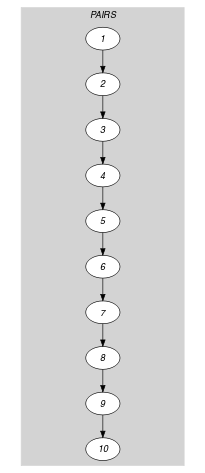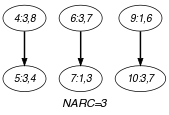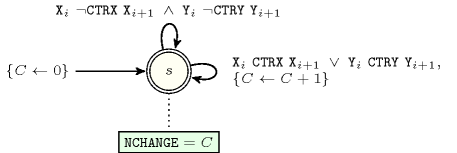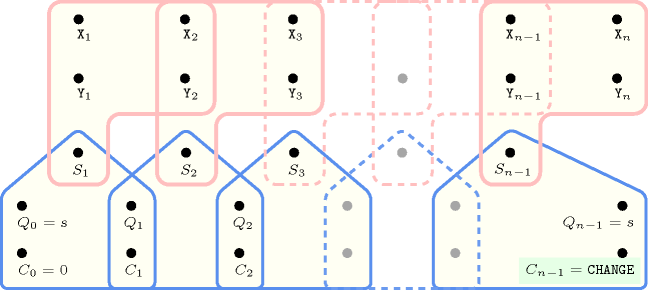5.63. change_pair
| DESCRIPTION | LINKS | GRAPH | AUTOMATON |
- Origin
- Constraint
- Arguments
- Restrictions
- Purpose
is the number of times that the following disjunction holds: , where and correspond to consecutive pairs of variables of the collection .
- Example
-
In the example we have the following 3 changes:
One change between pairs and since ,
One change between pairs and since ,
One change between pairs and since .
Consequently the constraint holds since its first argument is assigned value 3.
- Typical
- Symmetries
- Arg. properties
Functional dependency: determined by , and .
- Usage
Here is a typical example where this constraint is useful. Assume we have to produce a set of cables. A given quality and a given cross-section that respectively correspond to the and attributes of the previous pairs of variables characterise each cable. The problem is to sequence the different cables in order to minimise the number of times two consecutive wire cables and verify the following property: and do not have the same quality or the cross section of is greater than the cross section of .
- See also
generalisation: ( of replaced by ).
specialisation: ( of replaced by ).
- Keywords
characteristic of a constraint: pair, automaton, automaton with counters.
constraint arguments: pure functional dependency.
constraint network structure: sliding cyclic(2) constraint network(2).
constraint type: timetabling constraint.
- Arc input(s)
- Arc generator
-
- Arc arity
- Arc constraint(s)
- Graph property(ies)
-
- Graph class
-
- Graph model
Same as , except that each item has two attributes and .
Parts (A) and (B) of Figure 5.63.1 respectively show the initial and final graph associated with the Example slot. Since we use the graph property, the arcs of the final graph are stressed in bold.
Figure 5.63.1. Initial and final graph of the constraint


(a) (b)
- Automaton
Figure 5.63.2 depicts the automaton associated with the constraint. To each pair of consecutive pairs of the collection corresponds a 0-1 signature variable . The following signature constraint links , , , and : .
Figure 5.63.2. Automaton of the constraint

Figure 5.63.3. Hypergraph of the reformulation corresponding to the automaton of the constraint
